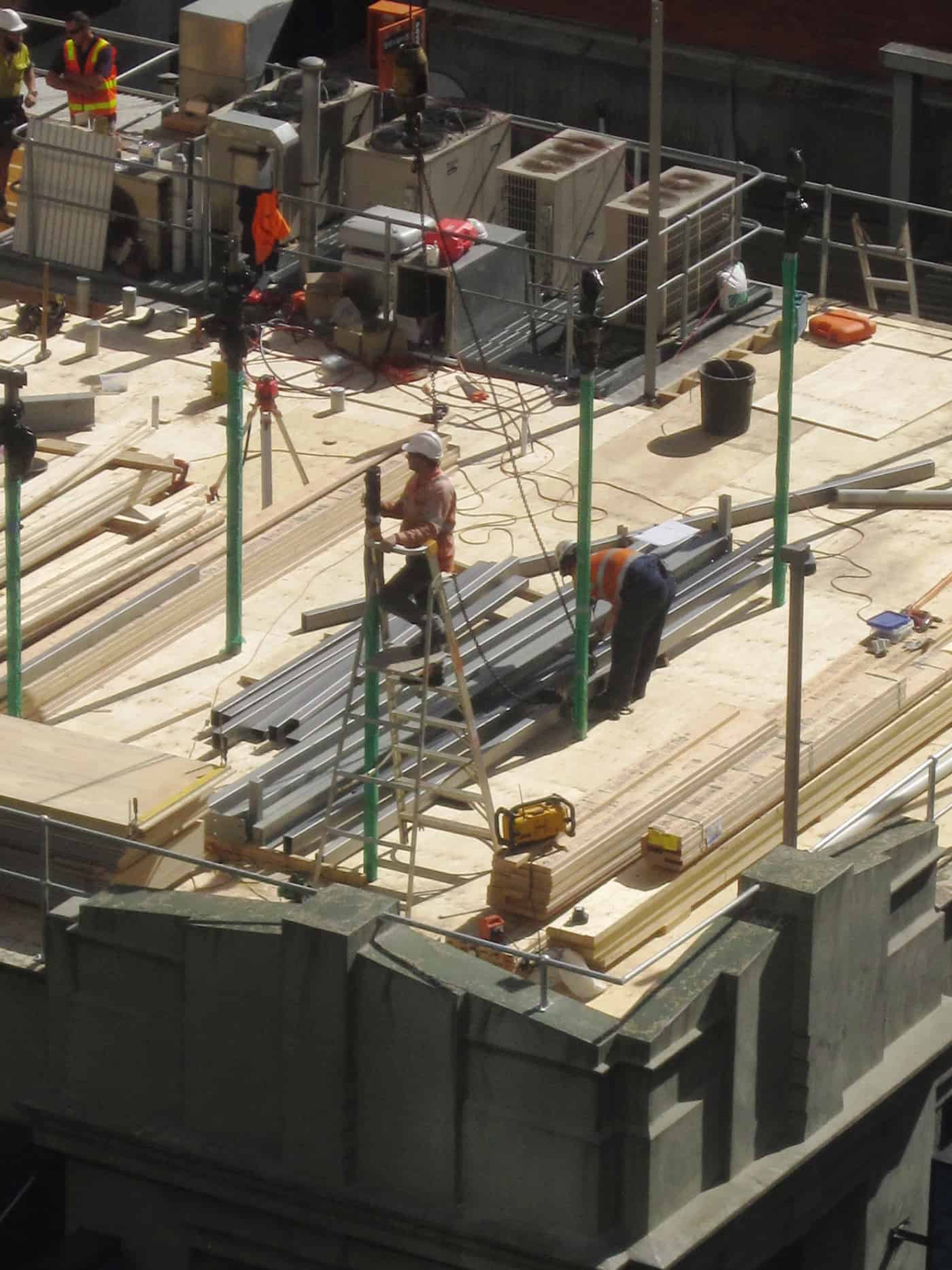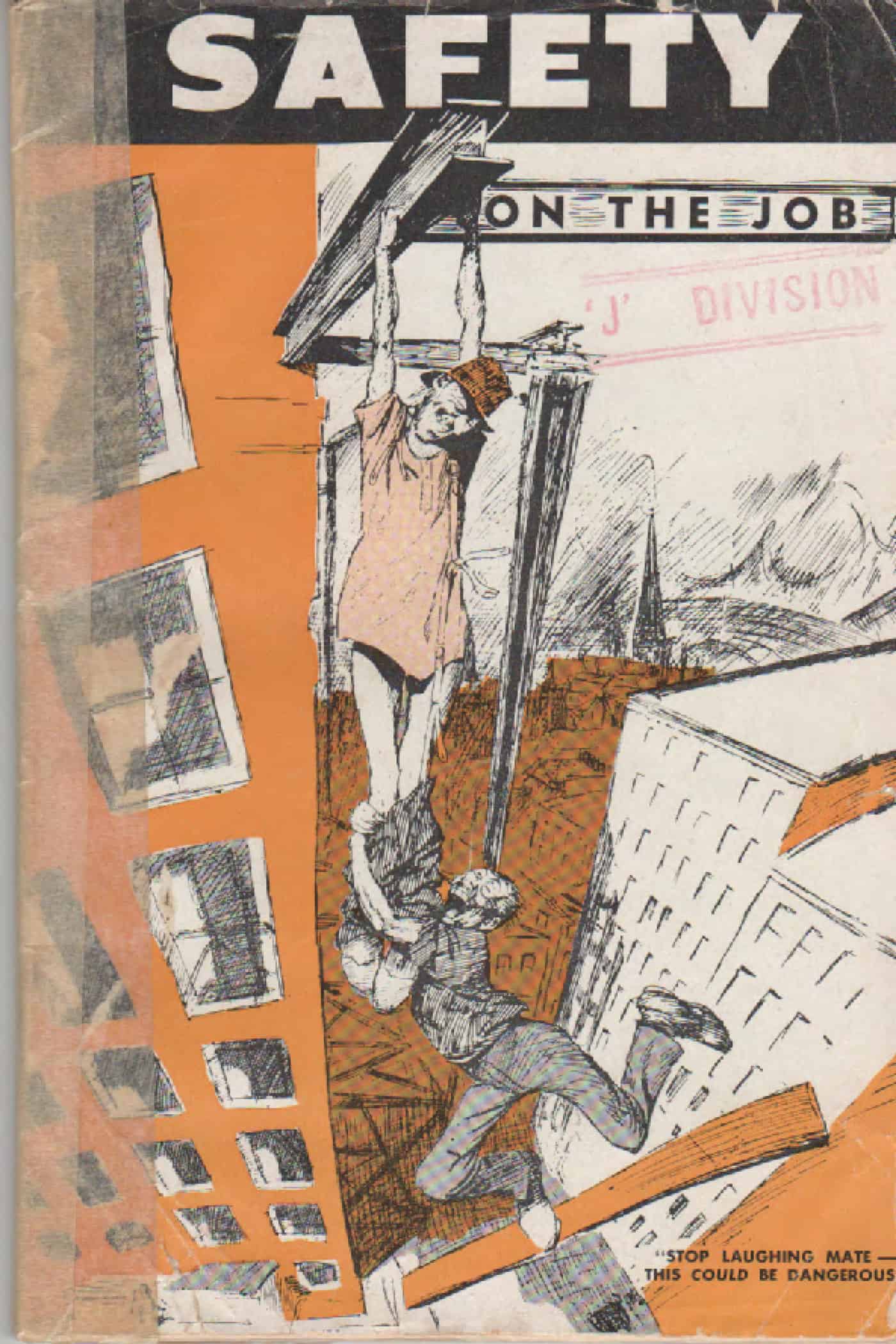 Across the street from an office in Melbourne, a pub is installing a roof area for entertaining. The work has gone smoothly as far as one can see but the position of the platform ladder in the corner of the roof was curious. If someone was working from the ladder and wobbled, it would be possible to not only fall a couple of metres to the roof but perhaps over the roof’s edge to the pavement two storeys below.
Across the street from an office in Melbourne, a pub is installing a roof area for entertaining. The work has gone smoothly as far as one can see but the position of the platform ladder in the corner of the roof was curious. If someone was working from the ladder and wobbled, it would be possible to not only fall a couple of metres to the roof but perhaps over the roof’s edge to the pavement two storeys below.
The worker in the front of this picture was moving to erect another platform ladder towards the front of the roof.
 The second picture shows the worker on that platform ladder. Similar risks of wobbling and falling over the roof’s edge.
The second picture shows the worker on that platform ladder. Similar risks of wobbling and falling over the roof’s edge.
How safe is unsafe? There is the potential for the worker to fall from the ladder to the street some distance below but he didn’t. So was his positioning of the ladder and work undertaken safe?

